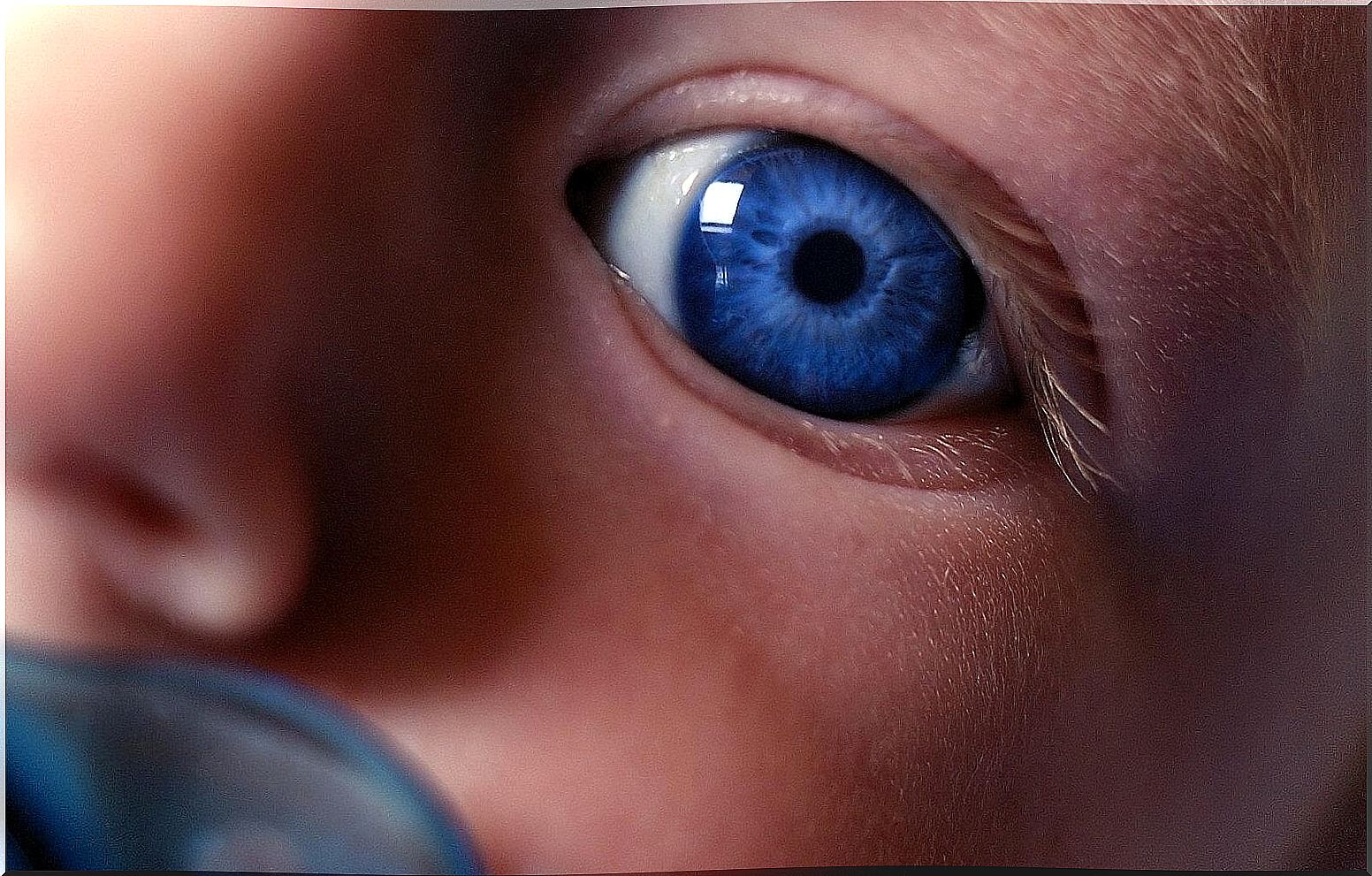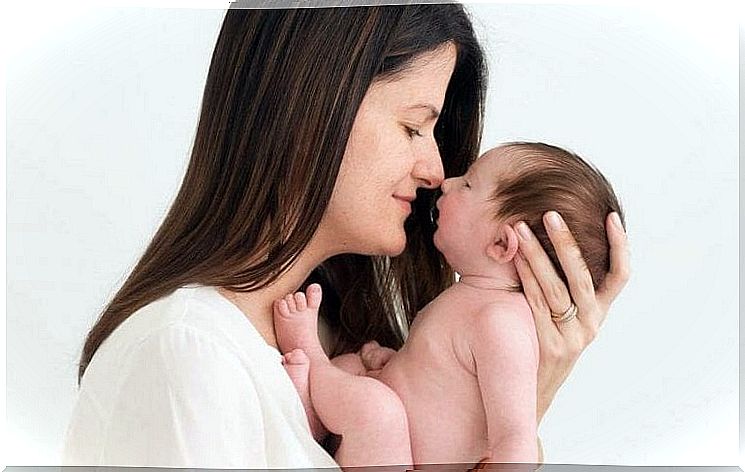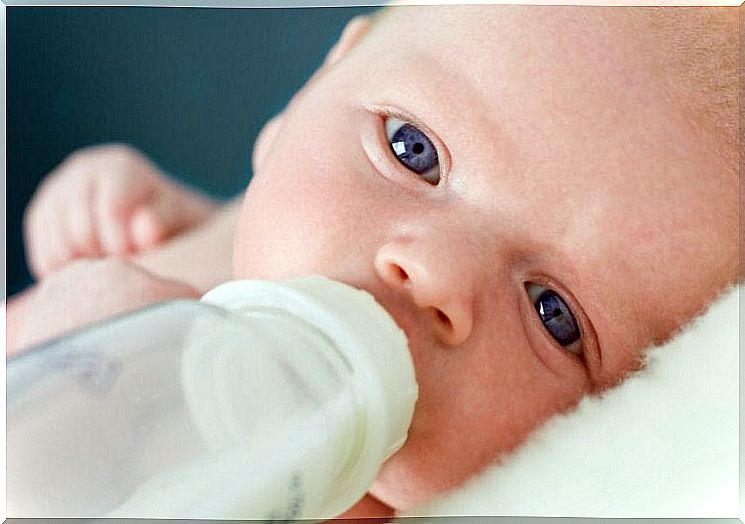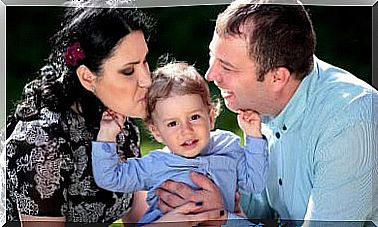I’m Admiring You Mommy: When The Newborn Discovers You my

The instant your baby is looking at you, multiple sensations arise, but… what are they really looking at? Can they tell the difference between Mom’s face and the faces of other family members?
A baby’s eyesight and eyes go through many changes over the first 6 months of life. Paying attention to every nuance, in the way he looks at objects, is something we should be aware of. Because the eyes are that essential and wonderful channel from which our children can discover the world.
However, we are sure you will not be surprised to learn this information. During the first weeks of a child’s life, there are only two essential aspects on which he can focus all his attention: you and the milk. Both symbolize this primal survival instinct. However, something else fascinating will also happen.
Your child will define your face as something significant in their brain . The more often he looks at your face, the more he will look for you and the more he will be happy to see you. The survival instinct is therefore combined with the power of affects. This bond is something that will never be lost.
Today, in this space, we invite you to discover different aspects of babies’ vision that are certainly of great help.
I’m looking at you mommy because you’re close to me
Babies’ vision is genetically programmed to connect with people and, in particular, with their parents . Newborns have very blurred vision for great distances. They cannot clearly see objects that are more than 30 or 40 cm away from their face.
Poor visual acuity for long distances in the first moments of life also corresponds to a survival instinct: reduce stress, fear and anxiety so that you can focus on what’s most important, the faces around you, the mother’s breast or the bottle.
Let’s find out more interesting details below.

The newborn makes quick eye contact with its mother
- He’s watching you, watching you and knowing who you are . Few things are as important as allowing an intimate and prolonged encounter between mother and child soon after birth. It’s not just the first eye contact. Skin-to-skin contact provides security. Furthermore, it reduces stress and creates that first bond between them.
- The faces are full of fantastic stimuli for a newborn. There’s a mouth that makes sounds, eyes that watch and move, and a contoured face that delimits everything that’s important to a baby.
This is a fantastic thing for both of them.
my baby crosses eyes
Don’t worry, this is completely normal. During the first 6 months of a baby’s life, going cross-eyed is common. The little one’s brain is “learning” to fix attention and must mature in this process, which, even if it doesn’t seem like it, is extremely complex.
- It is common to see babies cross-eyed during the first 2 or 4 weeks of life. Their vision is not yet accurate enough. It is common, in some situations, to be a little startled to see how the baby’s eyes cross.
- We have to keep in mind that most of a child’s visual development takes place in the brain, not the eyes.
- Thus, one of the biggest challenges for the developing brain is coordinating visual signals from side to side. Nerve signals from the eyes travel through the optic nerves and separate to both sides of the brain.
It is a very complex process that takes time, so that, finally, there is proper coordination of each eye in the proper direction.

Main moments of maturation in a baby’s vision
- At two months, we are delighted just to see our children look us in the face, that they are watching us between smiles or that they want to take with great interest that toy we are showing, looking from left to right. However, his attention level doesn’t last long.
- At two or three months, a baby is able to distinguish faces and be startled by strangers it has never seen.
- It is at this age that the baby will most enjoy visual stimuli, mobiles on top of the crib, for example. However, since the attention level is easily diminished, he will love any innovative and fun stimulation you offer.
- The next big visual milestone happens at 6 months of age. It is at this point that both sides of the brain are already at an optimal level of coordination and maturation.
- Children at this age are very curious, they pay attention, they figure things out and, most importantly, their coordination is perfect. We can cover one eye and with the other the baby will continue looking for a stimulus. However, if your child is already 6 or 7 months old and you keep noticing that he is squinting a little or that one of his eyes is not keeping the right direction, don’t hesitate to consult your pediatrician and ophthalmologist.
the color of a baby’s eyes
There is a very common myth. It’s the one we’ve all heard so many times that tells us that the blue color of a baby’s eyes is due to the fact that he’s still being breastfed.

- There is no scientific basis for believing this assumption. Is not true. The color of the iris, like hair and skin color, depends on a protein called melanin.
- When a baby is born it is common for their eyes to be gray or blue. This is because he has spent a long time in a dark environment and his melanocytes are not yet mature. It is a process that requires a certain amount of time and whose changes we will observe every day.
- This process of maturing and changing or not the color of a baby’s eyes happens differently in each child and depends on genetics. However, at 6 months the eye color starts to set and will become definitive at two years of age.
To conclude, few things are as magical as this moment when we realize that our baby is watching us. He knows that we are someone important to him, that he needs us and that little by little he will discover much more about us and the environment around him.
Don’t neglect your baby’s eye care. In case of any minor anomaly, do not hesitate to consult a good pediatrician.









